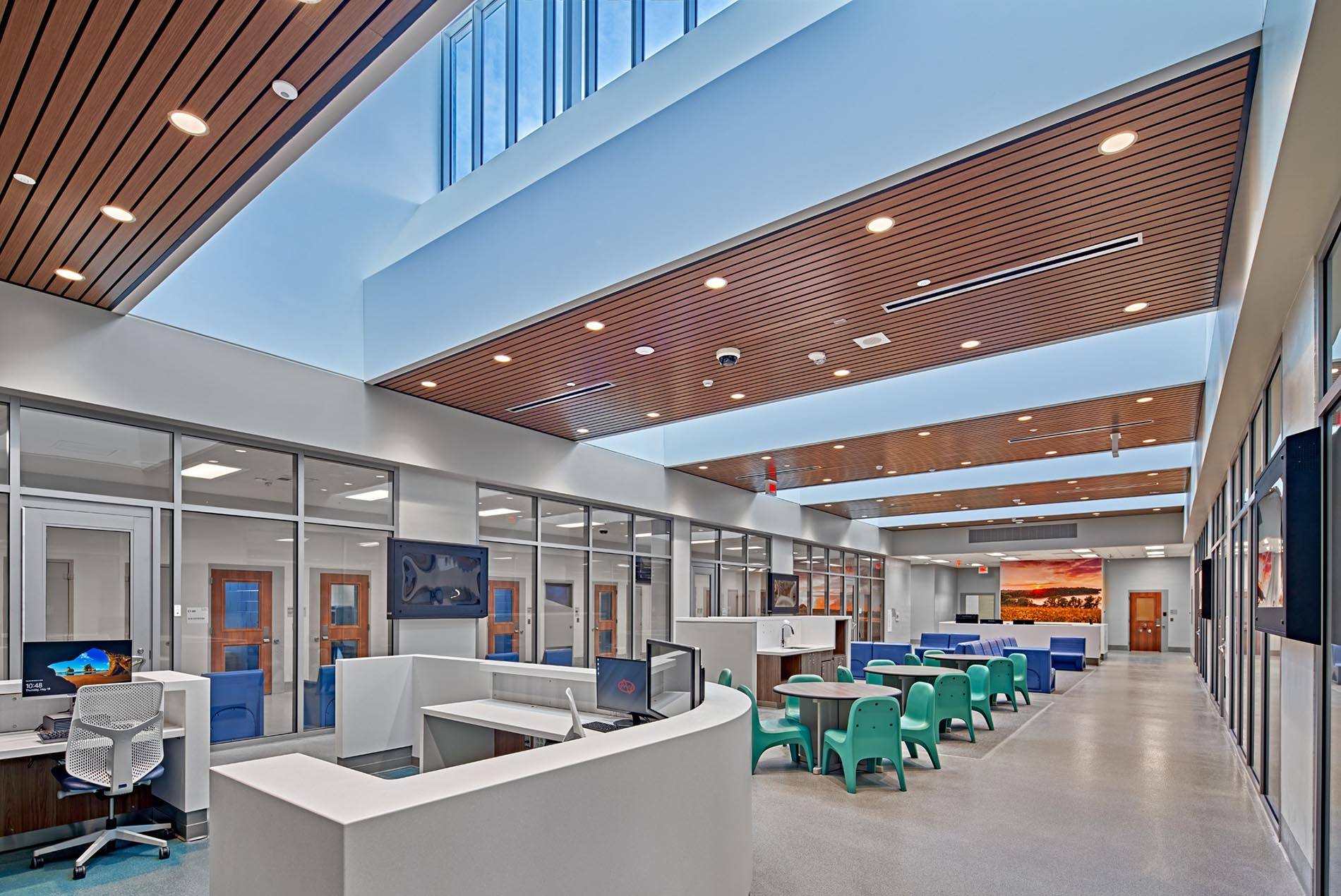Kristine Bishop Johnson is a director of HOK’s global Justice practice and the outgoing chair of the AIA’s Academy of Architecture for Justice knowledge community. In the following Q&A, Johnson discusses why it’s critical that architects influence the planning and design of justice facilities.
What led to you to justice architecture?
I had the opportunity to intern with the Department of State’s Bureau of Overseas Buildings Operations. That experience sparked an interest in embassy design and high-security building types. One of my first projects out of college was to design the support services building for a maximum-security state facility. That project opened my eyes to the importance of providing spaces for visitation and family interaction within these secure facilities. I was hooked and have been designing in the justice and government sector ever since. I love the complexity of these project types. You get the opportunity to work with broad segments of the community, understand the needs of different users and create spaces that support safety, healing and rehabilitation.
What is the most challenging aspect of what you do?
Overcoming misconceptions about justice architecture. Yes, we design jails and corrections facilities, but justice architecture is more than that. It includes courthouses, public safety buildings and other government and municipal facilities. Our work impacts people at so many different touchpoints and often at times when they are experiencing duress. As justice designers, we can challenge the status quo by educating community stakeholders and creating spaces that respond to people’s needs—spaces that are calming, supportive and reinforce positive outcomes.
Why is it important to have designers at the table when planning justice facilities?
Justice designers bring lessons from across markets and disciplines. We know firsthand what has worked in other jurisdictions and what has not, and we bring this evidence-based knowledge to our projects. As a multidisciplinary firm, HOK also draws insights from other markets, such as our healthcare practice, and applies those lessons to our justice projects. This has been particularly important in bringing behavioral health solutions and trauma-informed design to justice buildings. Lastly, architects are consensus-builders by nature. We take time to listen to the needs of all stakeholders—building occupants, staff, lawmakers, judges, community groups and facility operators—to ensure buildings meet the needs of all stakeholders, not just the loudest voices.

The open and light-filled dayroom at the Illinois Department of Corrections’ Joliet Inpatient Treatment Center.
What are examples of how trauma-informed design is improving the rehabilitation of incarcerated individuals?
Most people within the criminal justice system have experienced trauma. Whether it stems from addiction, poverty, prior neglect or simply being separated from family and friends while incarcerated, these individuals are often dealing with psychological or physical ailments. Having them sit in a hardened cell to dwell on their problems does not promote the healing they require or provide them the tools needed to re-enter society. Trauma-informed design, on the other hand, seeks to provide environments that are supportive and truly focused on rehabilitation. An example of this can be found at the Ohio Reformatory for Women, where the inmates helped us design a sensory garden. The women care for and maintain the garden, providing them with personal responsibility and a real sense of accomplishment. Another example is the Joliet Inpatient Treatment Center, a daylit-filled facility that provides residents with a host of mental health services and a degree of choice about how and where they spend their days.
What do you tell people who remain opposed to a firm like HOK participating in justice work?
I would argue we share something in common: we both want to improve outcomes for those impacted by the criminal justice system. Our approaches are just different. We accept the fact that pre- and post-trial justice facilities are not going away anytime soon, so why not work on making them more conducive to the needs of those in custody as well as staff and visitors? Why not use our seat at the table with lawmakers and facility operators to educate them as to how spatial and operational impacts can support rehabilitation and lower recidivism rates? I’d also let people know that HOK does not work for institutions whose values do not align with ours. For example, we do not design facilities that include solitary confinement or capital punishment spaces, nor do we work for private prison operators or design facilities meant specifically for immigration holding.
What excites you about the future of justice design?
I’m excited that more and more jurisdictions are recognizing the benefits of trauma-informed design and treatment-focused approaches to justice. This also extends to courthouses where more judges are employing treatment-based options and alternatives to incarceration, such as problem-solving or treatment courts. I’m optimistic this trend will continue, and we can reverse the stigma of justice facilities. Instead of being places associated with punishment, they can be thought of as community assets along the lines of libraries, schools and hospitals where people receive the services they need to live productive lives and be good neighbors within their communities. To do this, we also need to be mindful of where we site these facilities and ensure they’re accessible and open to the people most in need.